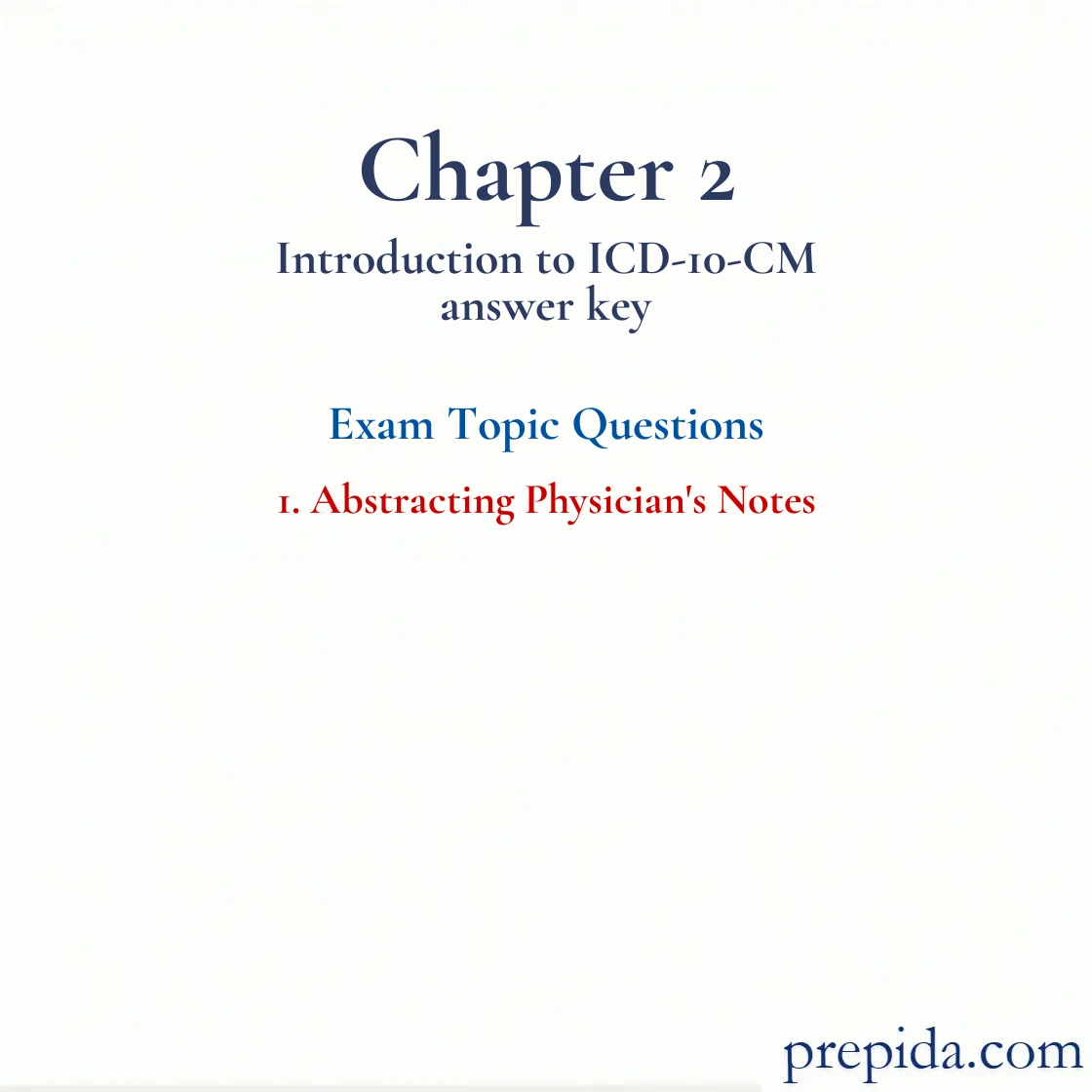
The Index to External Causes is found in which part of the ICD-10-CM manual?
- Volume I
- Volume II
- Volume III
- Volumes I and II
The Index to External Causes is in Volume II, Section 3.
External Cause: An event, outside the body, that causes injury, poisoning, or an adverse reaction.
Dr. Peterie examines Thomas because he has a family history of colon cancer. You should look this up in the Alphabetic Index under what key terms?
- Cancer, colon
- Neoplasm, colon, malignant
- History, family, malignancy, colon
- Malignancy, colon, history
The main term is history.
Another term for abstracting is:
- assigning.
- identifying.
- relating.
- specifying.
Abstracting is identifying the key words related to the visit you are coding.
A condition that caused or developed from the existence of another condition is called a:
- co-morbidity.
- complication.
- manifestation.
- sequela.
A manifestation is a condition caused or developed from the existence of another condition.
Manifestation: A condition caused or developed from the existence of another condition.
Another name for the first-listed diagnosis is the ____________ diagnosis.
- admitting
- final
- secondary
- principal
Another name for the first-listed diagnosis is the principal diagnosis.
Perinatal: The time period from before birth to the 28th day after birth.
Arnold has been diagnosed with osteosarcoma. Osteosarcoma in the Alphabetic Index directs you to see:
- neoplasm, bone, benign.
- neoplasm, bone, Ca in situ.
- neoplasm, bone, unspecified.
- neoplasm, bone, malignant.
The main term is osteosarcoma. Osteosarcoma in the Alphabetic Index directs you to see neoplasm, bone, malignant.
Malignant: Invasive and destructive characteristic of a neoplasm; possibly causing damage or death.
Adam was diagnosed with acute otitis media. Find this in the Alphabetic Index under:
- acute, media, otitis.
- media, acute, otitis.
- otitis, acute, media.
- otitis, media, acute.
The main term is otitis. Media is the anatomical site and acute is the phase.
Acute: Severe; serious.
Cindy is diagnosed with cardiac arrest. Find this in the Alphabetic Index under:
- arrest, cardiac.
- cardiac arrest.
- arrest, heart.
- heart arrest.
The main term is arrest and cardiac is the subterm, the anatomical site.
Myocardial Infarction (MI): Malfunction of the heart due to necrosis or deterioration of a portion of the heart muscle; also known as a heart attack.
Jennifer has a fever and a neck ache. Dr. Perlman diagnoses Jennifer with meningitis. You will code:
- fever.
- meningitis.
- fever and meningitis.
- neck ache.
Do not code signs/symptoms when you code the disease they are associated with.
The Table of Drugs and Chemicals is found in which part of the ICD-10-CM manual?
- Volume I
- Volume II
- Volume III
- Volumes I and II
The Table of Drugs and Chemicals is in Volume II, section 2.
ICD-10-CM: The acronym for International Classification of Diseases, Tenth Revision, Clinical Modification.
An eponym is a:
- disease of the epiglottis.
- disease of the epithelial tissue.
- disease named after a person.
- disease that is congenital.
An eponym is a disease or condition named after a person.
Eponym: A condition named after a person.
An infection is an example of a(n):
- symptom.
- eponym.
- procedure.
- condition.
A condition is a health-related situation.
Condition: A health-related situation.
Diagnosis codes explain:
- why the patient came to see the health care provider.
- what the physician did for the patient.
- how the patient became ill.
- where the patient lives.
Diagnosis codes explain the reason the patient came to see the health care provider.
Diagnosis: A physician’s determination of a patient’s condition, illness, or injury.